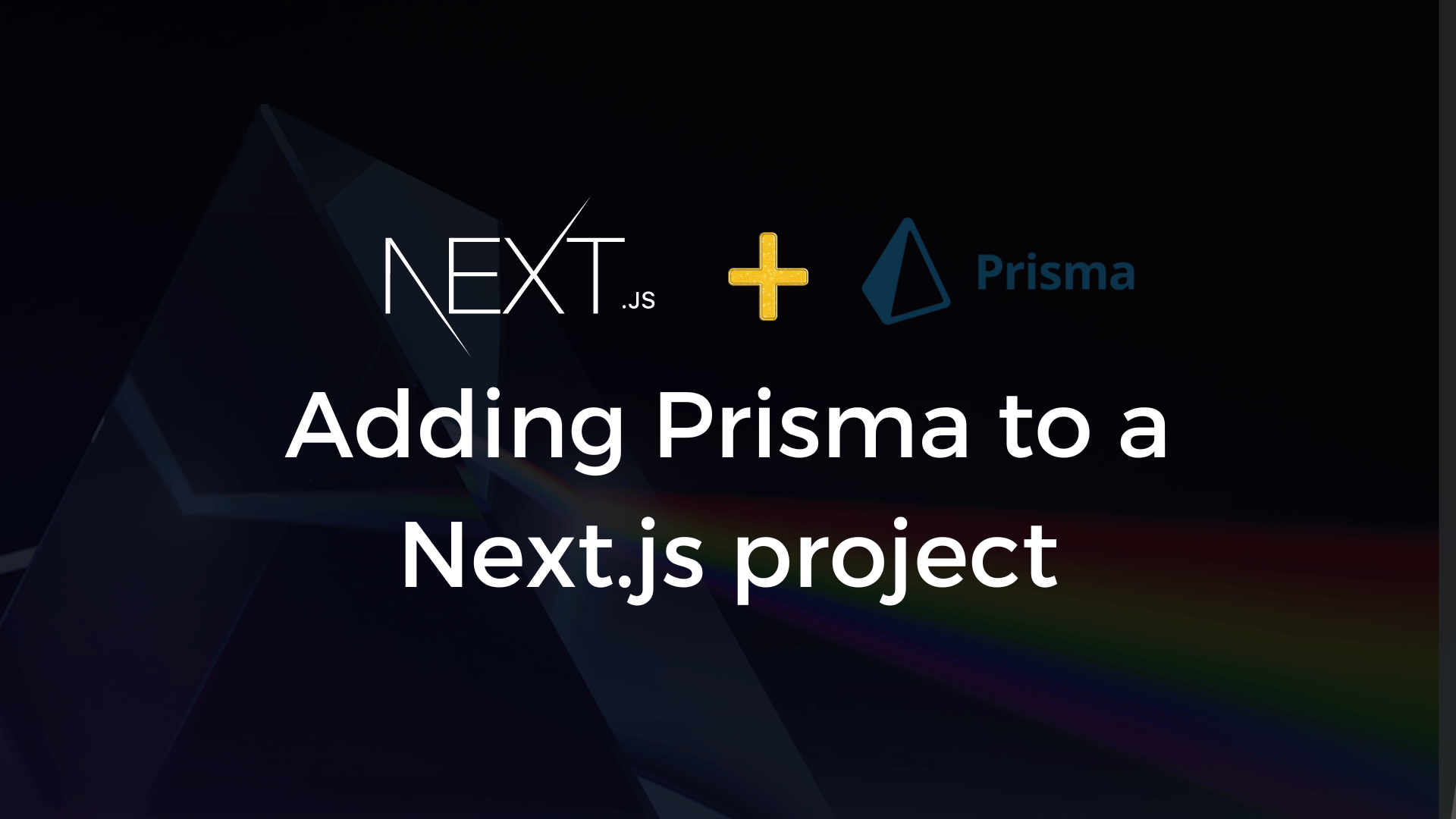Prisma Setup for Next.js
Prisma is a popular Object-Relational Mapper (ORM) that simplifies interactions with databases. It allows you to define your data model in a schema file and then use Prisma Client to interact with your database from your Next.js application.
Prerequisites
- Node.js and npm (or yarn) installed on your machine
- A Next.js project
Installation
1. Install Prisma and Prisma Client
Open your terminal and navigate to your Next.js project directory. Then, run the following command to install Prisma and Prisma Client:
bash npm install prisma @prisma/client
2. Initialize Prisma
Run the following command to initialize Prisma in your project:
bash npx prisma init
This will create a new folder named `prisma` in your project root directory. The `prisma` folder will contain your Prisma schema file (`schema.prisma`) and other configuration files.
3. Configure Prisma for SQLite
By default, Prisma is configured to use a remote database. However, for development purposes, it's often easier to use a local SQLite database.
Open the `prisma/schema.prisma` file and update the `datasource` block to look like the following:
prisma
datasource db {
provider = "sqlite"
url = "file:dev.db"
}
generator client {
provider = "prisma-client-js"
}
This configuration tells Prisma to use the SQLite provider and connect to a local database file named `dev.db`.
4. Limit Database Connections
Next.js applications can create a large number of database connections, which can exhaust your database resources. To prevent this, it's recommended to limit the number of connections Prisma Client can make.
Create a new file named `db.ts` (or `db.js` if you're not using TypeScript) inside a `utils` folder in your project directory. Then, add the following code to the file:
typescript
import { PrismaClient } from '@prisma/client';
let prisma: PrismaClient;
if (process.env.NODE_ENV === 'production') {
prisma = new PrismaClient();
} else {
let prismaClient = global.prisma;
if (!prismaClient) {
prismaClient = new PrismaClient();
global.prisma = prismaClient;
}
prisma = prismaClient;
}
export default prisma;
This code checks if a Prisma Client instance already exists and uses it if it does. This helps to avoid creating multiple connections to the database.
Use Prisma Client in Your Next.js Application
Now you can import the `prisma` object from the `db.ts` file in your Next.js components or API routes to interact with your database.
For example, here's a simple API route that uses Prisma Client to create a new user:
javascript
import { NextApiRequest, NextApiResponse } from 'next';
import prisma from '../utils/db';
async function handler(req: NextApiRequest, res: NextApiResponse) {
const { name, email } = req.body;
try {
const newUser = await prisma.user.create({
data: {
name,
email,
},
});
res.status(200).json(newUser);
} catch (error) {
res.status(500).json({ message: error.message });
}
}
export default handler;
Conclusion
By following these steps, you will have successfully set up Prisma in your Next.js project and be able to interact with your database using Prisma Client. Remember to switch your database connection to a production-ready solution like PostgreSQL before deploying your application.



Post a Comment
0Comments